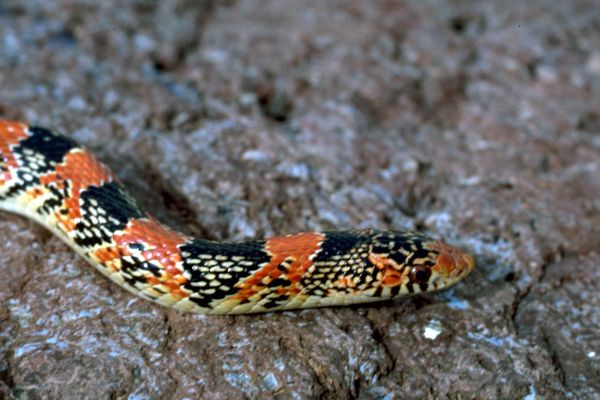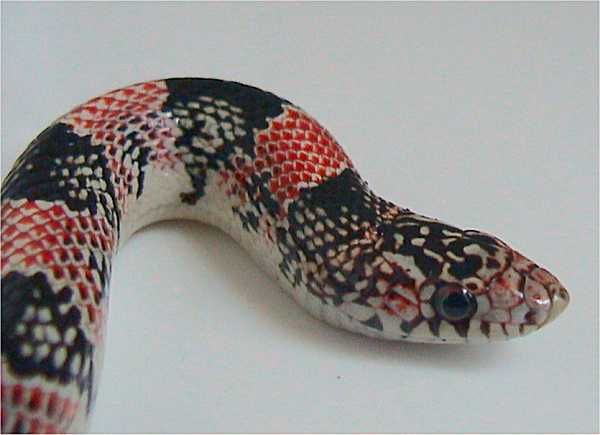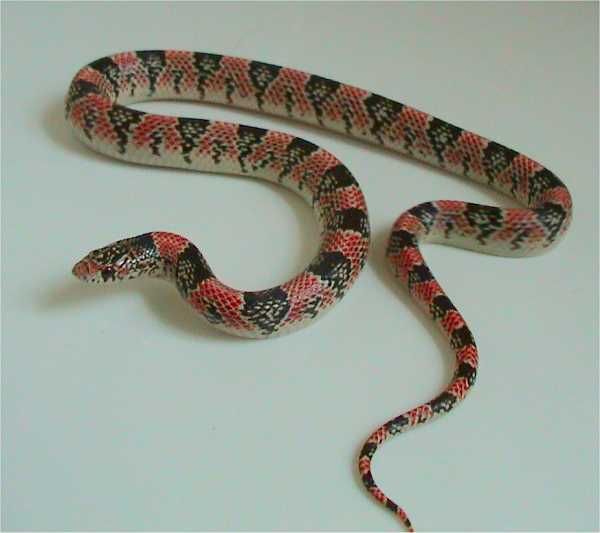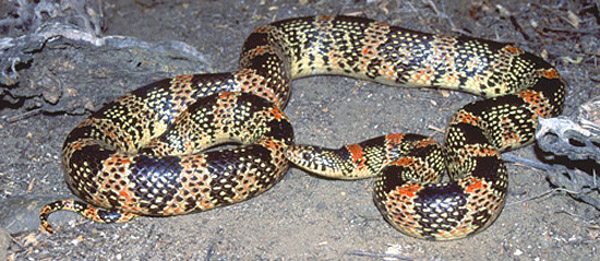Wildlife North America . com North American Animals - mamals, birds, reptiles, insects |
Long-Nosed Snake (Rhinocheilus lecontei)
Texas Longnose Snake, New Mexico Photograph by Gary M. Stolz, U.S. Fish and Wildlife Service. License: Public Domain. (view image details) 
Texas Longnose Snake, New Mexico Photograph by LA Dawson. Some rights reserved. (view image details) 
Texas Longnose Snake, New Mexico Photograph by LA Dawson. Some rights reserved. (view image details) 
Western Long-Nosed Snake Photograph by Chris Brown. License: Public Domain. (view image details)
LONG-NOSED SNAKE FACTS
DescriptionThe Long-Nosed Snake is a slender snake. It is cream with black saddle shaped markings with smaller reddish patches between the black markings. (Some snakes have no red marks). The underside is cream or yellow with no markings. The head is cream with small black spots. The sides have black saddle shaped marks speckled with white. The snout is very pointed. Juveniles have more prominent banding and no speckling (or faint speckles). The Western Long-Nosed Snake is a gentle species that vibrates tail when annoyed. It is similar in appearance to the California Kingsnake Size length 48-75 cm Environment Long-nosed snakes are found in arid and semi-arid deserts, grasslands, shrublands, and prairies. They are shy, nocturnal burrowing snakes and spend most of their time underground. Food They feed on lizards, amphibians, smaller snakes, but do not often eat rodents. Breeding Long-Nosed Snakes are oviparous, and lay clutches of 4-9 eggs in the early summer. The eggs hatch in late summer or early fall. Range found in northern Mexico, California, Nevada, Utah, Idaho, Arizona, New Mexico, Colorado, Kansas, and Texas. Notes harmless to humans. They do not readily bite, but release a foul smelling musk from their cloaca if harassed. Classification
Home | Mammals | Reptiles | Birds | Insects | Privacy Policy | Disclaimer | Contact Us |